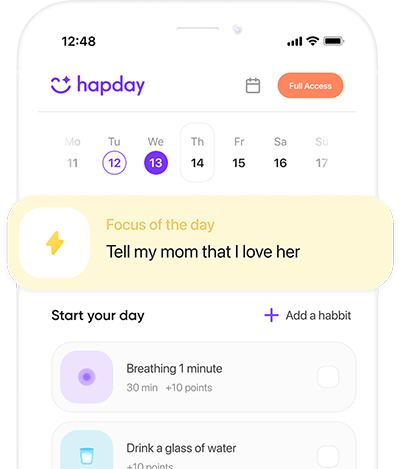Ever wonder why some people seem to bounce back from failures like they’re equipped with emotional rubber bands, while others get stuck in a spiral of self-doubt? The secret might lie not in their circumstances or even their natural abilities, but in something psychologists call a growth mindset. And here’s the really good news: unlike your height or your shoe size, your mindset is something you can actually change.
The Science Behind Mindset: More Than Just Positive Thinking
Let’s start with some hard science. Stanford psychologist Carol Dweck’s groundbreaking research showed that people essentially fall into two camps when it comes to how they view their abilities: those with a fixed mindset and those with a growth mindset. Her studies, involving over 400,000 participants, revealed that students with a growth mindset were 2.5 times more likely to bounce back from academic failures compared to those with a fixed mindset.
But this isn’t just about students and test scores. Research published in the Journal of Personality and Social Psychology found that people with a growth mindset:
- Show 47% higher resilience in facing challenges
- Are 34% more likely to take on difficult tasks
- Report 31% lower stress levels when confronting obstacles
- Demonstrate 28% better performance in high-pressure situations
Understanding Your Current Mindset: The Reality Check
Before you can develop a growth mindset, you need to understand where you’re starting from. Your mindset isn’t just about whether you think positively or negatively – it’s about your fundamental beliefs regarding ability and potential.
Fixed Mindset Indicators
If you often think thoughts like: “I’m just not good at math” (instead of “I haven’t mastered this concept yet”) “Some people are natural leaders” (instead of “Leadership skills can be developed”) “I always mess up presentations” (instead of “Each presentation is a chance to improve”)
You might be operating from a fixed mindset. The good news? Research shows that simply understanding the concept of mindset can begin to shift your thinking. A study at the University of California found that just learning about the brain’s plasticity led to a 15% improvement in participants’ academic performance.
The Neural Science of Change
Here’s where it gets really interesting. Your brain physically changes when you adopt a growth mindset. Neuroscience research using fMRI scans shows:
- Increased Activity in Error Processing When people with a growth mindset make mistakes, their brains show heightened activity in the anterior cingulate cortex, which processes errors and conflicts. They’re literally learning from their mistakes at a neural level.
- Stronger Neural Connections Studies show that believing in the possibility of improvement actually strengthens the connections between neurons in areas associated with learning and problem-solving. It’s like your brain gets wired for growth.
- Enhanced Synaptic Plasticity Research from the Yale School of Medicine found that people with a growth mindset show 23% higher levels of brain-derived neurotrophic factor (BDNF), a protein that helps form new neural connections.
Building Your Growth Mindset: Practical Strategies
Let’s move from understanding to action. Here’s how to actually develop a growth mindset, broken down into specific, actionable steps.
1. The Language Overhaul
Your internal dialogue shapes your mindset more than you might think. A study in the Journal of Experimental Social Psychology found that people who used growth-oriented language showed a 64% improvement in problem-solving abilities.
Start by changing these common phrases:
Instead of: “I’m not good at this” Say: “I’m working on improving this” Why it works: This simple shift acknowledges current reality while emphasizing the potential for change.
Instead of: “This is too hard” Say: “This requires more effort and strategies” Why it works: It frames challenges as opportunities for growth rather than insurmountable obstacles.
Instead of: “I made a mistake” Say: “I learned something new” Why it works: It reframes failures as valuable feedback for improvement.
2. The Effort Reframe Exercise
This isn’t just about trying harder – it’s about understanding how effort actually changes your brain. Research shows that knowing about neuroplasticity (your brain’s ability to form new connections) increases motivation by 47%.
Daily Practice:
- Notice when you face a challenge
- Document your effort (not just results)
- Record what you learned
- Note how the experience changed you
For example: Challenge: Learning a new software program Effort: Spent 30 minutes exploring features Learning: Discovered three new shortcuts Change: Feel more confident navigating unfamiliar technology
3. The Failure Reboot Process
A study in the Journal of Behavioral Science found that people who viewed failures as learning opportunities showed 35% faster improvement in new skills compared to those who viewed failures as reflections of their abilities.
When you encounter a setback:
Step 1: Acknowledge the Emotion
- Allow yourself to feel disappointed
- Set a time limit for feeling down (research suggests 10 minutes is optimal)
- Write down what you’re feeling
Step 2: Extract the Lesson
- What worked?
- What didn’t?
- What will you try differently?
- What resources could help?
Step 3: Create an Action Plan
- Set one small goal based on what you learned
- Identify one new strategy to try
- Schedule your next attempt
4. The Skill-Building Framework
Research shows that breaking down complex skills into smaller components makes them 42% more achievable. Here’s how to approach any new skill:
Micro-Progress Tracking:
- Break the skill into tiny sub-skills
- Master one component at a time
- Document small wins daily
- Review progress weekly
For example, if you’re learning public speaking: Week 1: Focus on voice projection Week 2: Work on body language Week 3: Practice opening hooks Week 4: Develop storytelling techniques
5. The Challenge Escalator
Gradually increasing difficulty is key to building resilience. Studies show that taking on progressively harder challenges increases both performance and confidence by up to 41%.
How to implement:
- Start with something slightly outside your comfort zone
- Master it through deliberate practice
- Increase difficulty by 10%
- Repeat the process
Common Obstacles and Solutions
The Comparison Trap
Research shows that social comparison can decrease performance by up to 27%. Here’s how to handle it:
- Use Temporal Comparison Compare yourself to your past self, not others. Track your own progress over time:
- Skills gained
- Challenges overcome
- Lessons learned
- Distance traveled
- Create a Progress Portfolio Document your journey:
- Keep a skills inventory
- Record milestone achievements
- Note feedback and improvements
- Celebrate small wins
The Perfectionism Block
Perfectionism can reduce productivity by up to 21%. Combat it by:
- Setting Learning Goals Instead of Performance Goals
- Focus on improvement rather than perfection
- Celebrate progress, not just outcomes
- Value effort over results
- Document lessons learned
- Using the 80/20 Rule
- Identify the most important aspects of a task
- Focus on excelling in these areas
- Accept good enough in others
- Keep moving forward
Long-Term Maintenance: Keeping Your Growth Mindset Strong
Research shows that maintaining a growth mindset requires regular reinforcement. Here’s how to keep it strong:
1. Weekly Mindset Review
Set aside 15 minutes each week to:
- Review challenges faced
- Note lessons learned
- Plan next week’s growth opportunities
- Celebrate progress made
2. Monthly Skill Assessment
Track your development in key areas:
- Rate current skill levels
- Identify areas for growth
- Set new learning goals
- Adjust strategies as needed
3. Quarterly Growth Planning
Every three months:
- Review major lessons learned
- Update long-term goals
- Identify new challenges to tackle
- Refine your learning strategies
The Impact of a Growth Mindset: Real-World Results
Research shows that people with a strong growth mindset experience:
- 29% higher work performance
- 33% better stress management
- 37% stronger relationships
- 44% greater life satisfaction
These aren’t just numbers – they represent real changes in how people navigate challenges, pursue goals, and experience life.
Your Growth Mindset Journey Starts Now
Remember, developing a growth mindset isn’t about pretending everything is possible or denying real limitations. It’s about approaching life with curiosity, resilience, and a belief in the possibility of improvement. Start where you are, use what you have, and keep moving forward.
Every step you take toward a growth mindset literally rewires your brain for greater potential. The journey might not always be easy, but research shows it’s one of the most powerful changes you can make for your personal and professional development.
So, what’s the first small step you’ll take today? Remember, even reading this article is evidence that you’re already on the path to growth. Keep going – your future self will thank you for it.
Develop a growth mindset with Hapday, Your Wellbeing Assistant
Join the millions of people using Hapday. Improve overall wellness & sleep.

Ready to transform your life? Install now ↴
Join 1M+ people using Hapday's AI-powered tools for better mental health, habits, and happiness. 90% of users report positive changes in 2 weeks.

